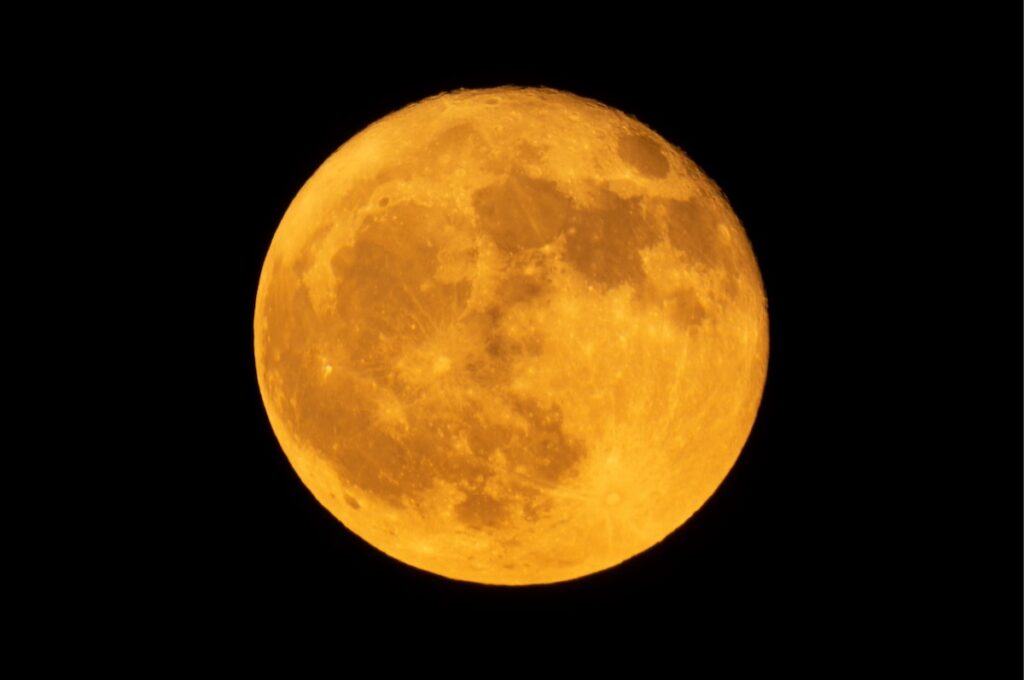As the weather cools and nights grow longer, the skies above Lake Martin offer an incredible show. With its open horizons and calm waters, Lake Martin provides one of Alabama’s best settings for astronomical viewing. From brilliant meteor showers to the glowing Beaver Moon, November and December bring some of the best stargazing opportunities of the year. Here’s what to watch for and how to make the most of the lake’s low light pollution and open horizons.
The Leonids Meteor Shower
The Leonids are active in early to mid-November and reach their peak around November 17. Under dark skies, observers can expect to see around 10 to 20 meteors per hour — sometimes more if conditions are especially favorable. The best time to view the Leonids is after midnight, facing toward the constellations near Leo, when the radiant is highest.
For optimal viewing, find a quiet spot away from bright lights — Lake Martin’s lakeside areas are perfect for this. Bring a reclining chair or blanket, dress warmly, and let your eyes adjust to the dark for at least 20 minutes.
The Taurids Meteor Showers
Both the Southern and Northern Taurid meteor showers are active throughout November, with the Southern Taurids peaking in early November and the Northern Taurids following mid-month. Although these showers typically produce fewer meteors than others, they are known for their slow, bright fireballs — unforgettable for anyone lucky enough to see one.
The best viewing times are from late evening to after midnight, ideally during nights with little moonlight. Find a location with an open sky view across the lake for maximum visibility.
The Beaver Moon
November’s full moon, known as the Beaver Moon, typically occurs in the latter part of the month. Historically, it marked the time when beavers built their winter dams — and today, it’s one of the most picturesque moons to observe and photograph.
This is an ideal time for scenic moonrise photography. Position yourself where you can see the moon rising over Lake Martin’s shoreline or open water. Use a telephoto or zoom lens to capture the large, low moon as it reflects off the lake’s surface for a dramatic shot.
Planet and Moon-Phase Highlights
In November 2025, Mercury makes a noteworthy evening appearance, offering a great chance to spot this elusive planet just after sunset. November’s darker moon phases also make it an excellent month for observing deep-sky objects like star clusters and nebulae. Bring binoculars or a small telescope for enhanced views of Jupiter’s moons and Saturn’s rings.
The Geminids Meteor Shower
As December arrives, the Geminids take center stage. Peaking around December 13–14, this is one of the most spectacular meteor showers of the year. Under dark, clear skies, you could see dozens of meteors per hour — sometimes even more.
For best results, start watching after 10 p.m. as the constellation Gemini rises, continuing through the pre-dawn hours. Bundle up in layers, find a comfortable lakeside viewing spot away from city lights, and let the show unfold. Weekends near the peak are especially ideal for group viewing sessions.
The Ursids Meteor Shower
Capping off the year is the Ursids, peaking around December 22. Though smaller than the Geminids, the Ursids still offer a pleasant display, especially for those who can’t get enough of stargazing during the holiday season. The best time to observe is after midnight when the radiant near Ursa Minor is highest in the sky.
This event often coincides with the Winter Solstice, making it a perfect reason to bundle up and enjoy a peaceful night under the stars.
Winter Sky Watching Around Lake Martin
December brings earlier sunsets and long, dark nights — perfect for extended stargazing. Familiar winter constellations like Orion and Taurus dominate the southern sky, offering spectacular views through binoculars or a telescope.
To make the most of your experience:
- Choose locations with minimal light pollution along Lake Martin’s shoreline.
- Dress warmly, as temperatures drop quickly after sunset.
- Bring a reclining chair or a blanket for added comfort and improved sky visibility.
- Plan sessions after moonset or before bright moonrise for the best meteor activity.
- Check weather forecasts for clear conditions and avoid cloudy nights.
The lake has always been exceptional for astronomical viewing. The fall and winter seasons offer clearer skies that open up the cosmos to those who live near or visit the lake. Many people who live in metropolitan areas are astounded by the fantastic viewing experience. Whether you’re a seasoned observer or just looking for a peaceful night under the stars, November and December offer celestial events worth staying up for.












